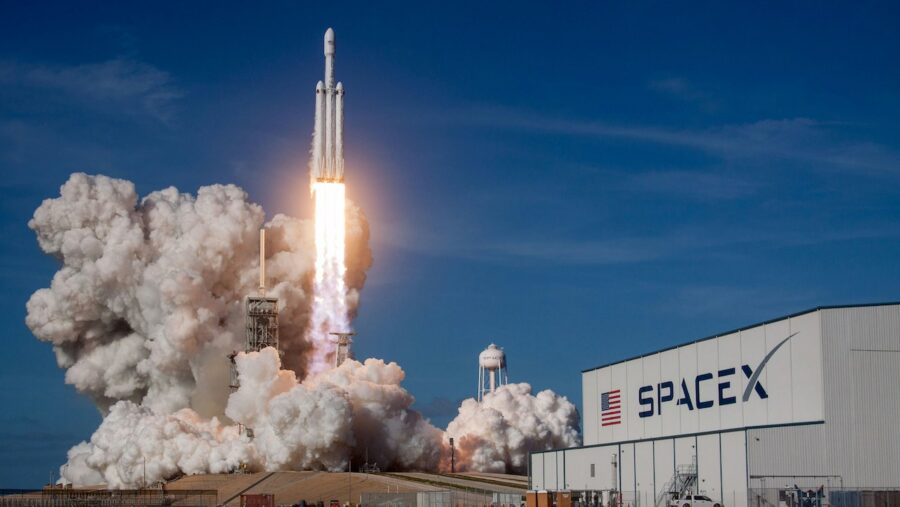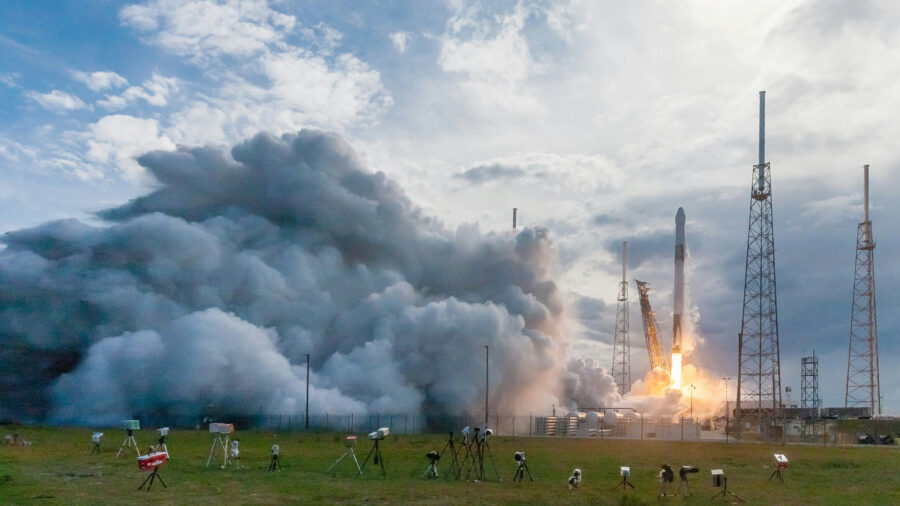SpaceX Booster Explodes In Massive Fireball

After boasting an impressive streak of consecutive successful launches, SpaceX has faced its first critical failure of its reusable Falcon 9 booster program in over three years. While attempting to return to Earth following the launch of the Starlink 8-6 mission, the lead booster experienced an uncontrollable fire while in the landing process aboard the droneship, “A Shortfall of Gravitas,” before toppling over and erupting into a massive fireball. The SpaceX explosion has resulted in the FAA grounding the company until further notice as it reviews the data from the incident.
Although the return of the Falcon 9 booster is considered a secondary component in its mission, the SpaceX explosion can be seen as a failure for the space technology company…
In the early morning of August 28, the Starlink 8-6 mission launched from the Cape Canaveral Air Force Station in Florida as part of a routine mission to deliver a supply of 21 satellites to the SpaceX Starlink constellation. After sending the satellites on their way into orbit, Falcon 9 booster 1062 made its way to land on the uncrewed droneship. However, as the booster ignited its engines above the deck of “A Shortfall of Gravitas,” a fire broke out aboard the SpaceX booster, causing it to erupt into flames, explode, and tip over into the Atlantic Ocean.
As SpaceX picks up the pieces following its booster explosion, the FAA has grounded any future SpaceX flights until an investigation into the incident is completed.
Although the return of the Falcon 9 booster is considered a secondary component in its mission, the SpaceX explosion can be seen as a failure for the space technology company, which prides itself on its business model of the Falcon 9’s reflight capability. According to SpaceX, the Falcon 9 booster program is the first orbital-class rocket that is able to reuse the most expensive parts of its rocket in order to help drive down the operating costs of space access. Before the catastrophic failure of Falcon 9 booster 1062, which was on its 23rd total flight, the company had seen 267 consecutive booster landings dating back to February 2021.

As SpaceX picks up the pieces following its booster explosion, the FAA has grounded any future SpaceX flights until an investigation into the incident is completed. “An investigation is designed to further enhance public safety, determine the root cause of the event, and identify corrective actions to avoid it from happening again,” the agency said in a statement.
With SpaceX’s most recent grounding from the FAA, the launch of the upcoming Polaris Dawn mission, which is being funded by billionaire Jared Isaacman, has been put into jeopardy.
This is the second grounding of a Falcon 9 booster that SpaceX has experienced in the last two months. In July 2024, the FAA grounded the company for two weeks after a rocket’s second stage failed to relight properly during a Starlink launch. SpaceX led the investigation into the explosion which discovered that the second-stage engine froze over while in space, which resulted in the rocket being unable to effectively deliver its payload.
With SpaceX’s most recent grounding from the FAA, the launch of the upcoming Polaris Dawn mission, which is being funded by billionaire Jared Isaacman, has been put into jeopardy. The mission, which is slated to become the first commercial spacewalk in history in order to perform an on-orbit demonstration of Starlink connectivity, has already been set back multiple times in 2024 due to technical issues and weather concerns. As the Polaris Dawn mission is put on hold for the time being, it remains to be seen how impactful the SpaceX explosion will be on future space exploration.
Source: Spaceflight Now












